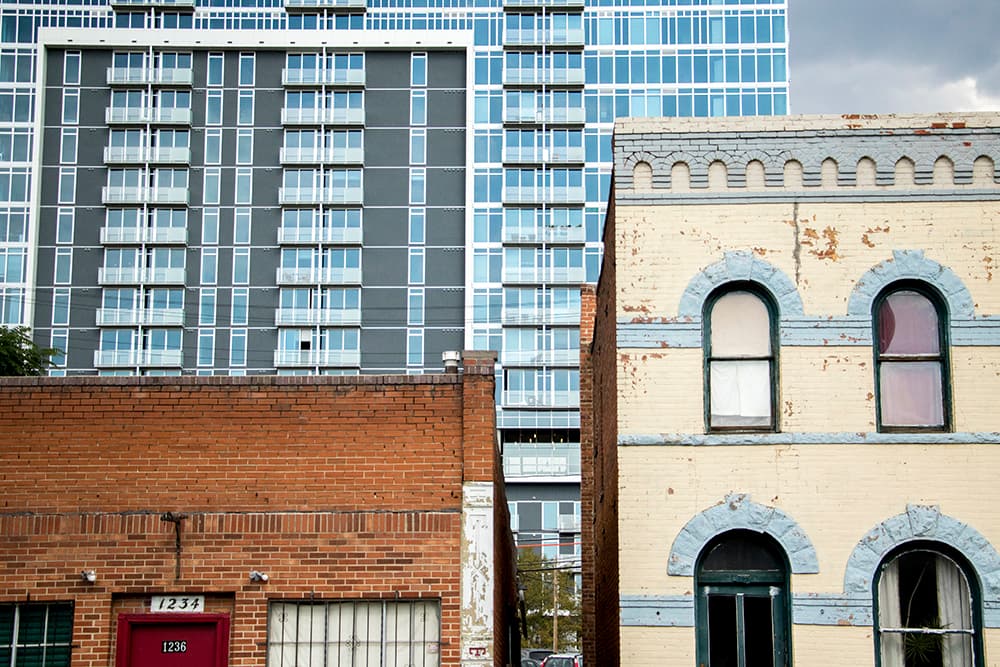A new report suggests Colorado falls near the middle of the road compared to other states when it comes to income inequality, at least when its measured by the ratio of the state's top 1 percent and bottom 99 percent of income.
The report, titled “The new gilded age Income inequality in the U.S. by state, metropolitan area, and county” was published last week by Economic Policy Institute and examines data from 1917 to 2015. It showed that Colorado’s numbers are close to the national average.
The report says that since the 1970s, income inequality has risen in every state. And more recently, the report says the income of the top 1 percent of earners grew faster than the income of the bottom 99 percent in 43 states and the District of Columbia from 2009 to 2015.
Colorado ranked 20th in the report’s list, which ranked states based on the difference between the average annual income of the top 1 percent and the average annual income of the bottom 99 percent; Colorado has a ratio of 20.6, which means the 1 percent's average in Colorado is 20.6 times more than the bottom 99 percent's average. The report showed the average income of the top 1 percent in Colorado was $1.26 million, while the average income of the bottom 99 percent was $61,165.
New York ranked No. 1 overall, followed by Florida, Connecticut, Nevada and Wyoming (which is now home to the county with the biggest income inequality in the country).
Metropolitan State University economics professor Kishore G. Kulkarni has written several articles on income distribution. He said Colorado’s ranking is relatively good and is likely due to the number of people moving to the state.
“Because of this migration, we don’t have as much income inequality,” Kulkarni said. People moving here from places like California, Texas and Arizona are moving here with jobs in place, and usually, ones that pay relatively good salaries that are close to the state’s per capita income, which means it doesn’t affect the average. “We have computer scientists moving into the state, (so) the income inequality will go down because they’re already making money here.”
Kulkarni said the metric used by the researchers isn’t necessarily the best way to measure income inequality. It’s different from the Gini coefficient often used to measure income inequality. But the report does seem to reflect how Colorado also scores well on a per capita income, which he said is based on the number of people who live here and the income they generate. The state currently has a per capita personal income of $53,504, which is 13th in the U.S., according to the U.S. Department of Commerce.
Authored by Estelle Sommeiller and Mark Price, the EPI report offers some suggestions to address the income inequality gap.
"We need policies that return the economy to full employment and keep it there, return bargaining power to U.S. workers, increase political participation by all citizens, and boost public investments in child care, education, housing, and health care," the report says. "Such policies will help prevent the wealthiest few from appropriating more than their fair share of the nation’s expanding economic pie."
In order to be in the top 1 percent of earners in Colorado, a family would need to be making at least $458,576, the report said.
The EPI report said the top 1 percent take home 17.2 percent of all of the income in Colorado.
Pitkin County (whose county seat is Aspen) is named the most income-unequal county in the state in the report. The county is home to one-percenters making 72.2 times more than the bottom 99 percent (the average income of the top 1 percent here is an astonishing $6.6 million, according to the report) making it the 7th among counties with the largest differences in income in the country.
Across the country, the average income of the top 1 percent is $1.3 million, while the average income of the bottom 99 percent is $50,107. This gives the entire country a top-to-bottom ratio of 26.3. To be in top 1 percent nationally, a family would need to make at least $421,926.
Pitkin County was one of two counties in Colorado that ranked in the top 10 in the country.
Coming in at No. 8 was San Miguel County, in Western Colorado, and whose county seat is Telluride. The report listed the county as having a ratio of 69.2, with the average income of the top 1 percent being $4,515,363 compared to the $65,281 average of the bottom 99 percent.
Here’s how other counties in Colorado stacked up compared to the 3,061 counties included in the report:
- (49) Routt
Average income of top 1 percent: $2,507,070
Average income of bottom 99 percent: $71,006
Ratio: 35.3 - (80) Eagle
Average income of top 1 percent: $2,567,254
Average income of bottom 99 percent: $82,763
Ratio: 31.0 - (107) Denver
Average income of top 1 percent: $1,687,561
Average income of bottom 99 percent: $60,245
Ratio: 28.0 - (120) Logan
Average income of top 1 percent: $1,055,819
Average income of bottom 99 percent: $39,247
Ratio: 26.9 - (132) Boulder
Average income of top 1 percent: $2,049,421
Average income of bottom 99 percent: $77,448
Ratio: 26.5













